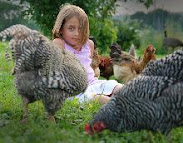
Found wherever cabbage is grown, the diamondback moth deposits a single egg or groups of eggs usually on the underside of foliage. In 5 to 6 days, larva emerge. They are colorless but as they develop, they turn green. They leaf mine for food and because they are so small, it often goes unnoticed and because they emerge from their eggs on the bottom of the foliage, that is where they feed. The result is irregular patches of damage, and the upper leaf epidermis is often left intact.
While in the pupa stage, they are in loose silk cocoons for about 8 days on the outer or lower foliage. This can also occur within the heads of broccoli and cauliflower. As adults, they are weak fliers aided by the wind to carry them long distances. They stay close to the ground and fly in short bursts if not helped along by a good breeze. They do not handle cold weather well and die off, but they re-invade cold winter areas in the spring aided by southern winds.
Plant damage is caused by the larva. They are very small and can be very numerous. The average female lays about 150 eggs during her 10 day cycle and the entire life cycle lasts about a month.
The tiny larva feed on cruciferous vegetable crops: broccoli, cauliflower, cabbage, brussel sprouts, Chinese cabbages, kale, collards, kohlrabi, mustard, radish, turnip, and watercress, with collards being a particular favorite.
They are susceptible to viruses and fungus diseases and are also are often killed by the parasitoids such as Microplitis plutellae. Another major killer of these eggs and larva is rain.
Systems where sprinklers are raining down on the garden will have fewer of these pests. Crop diversity helps to keep the numbers down as well. Planting cruciferous crops with other crops between will help to prevent the spread.
Good luck!
What do you do with your garden harvest?
Translate This Page
What's in Season?
Urban Sustainable Living Ezine
My Blog List
-
-
Cheaper meals, for one or more2 weeks ago
-
Hello world!5 years ago
-
-
Orchid Flowers9 years ago
-
-
Our blog has moved!13 years ago
-
‘Back to School’ Sales already?15 years ago
-
Categories
- $Green Incentives$ (8)
- Aeroponics (8)
- Alcoholic (1)
- Aquaculture (2)
- Autumn (5)
- Baking Soda Tidbit (33)
- Banana (1)
- Bell Pepper (5)
- Beneficial Insects (5)
- Beverages (2)
- Blueberries (7)
- Body Care (3)
- Borax (5)
- Bulk Buying (10)
- Busy (3)
- Candy (1)
- Canning and Preserving (17)
- Carrots (14)
- Cherry (1)
- Children (6)
- Chocolate (3)
- Citrus Crisis (1)
- Cloth Pads (2)
- Cloth Swiffer Pads (2)
- Companion Planting (1)
- Composting (3)
- Conservation (1)
- Container Gardening (7)
- Cooking with Herbs (5)
- Cucumber (2)
- Dana's Greek Style Salad (1)
- Dana's Open Omelet (1)
- Dessert (2)
- Destructive Insects (4)
- Diatomaceous Earth (2)
- Dwarf Varieties (9)
- Essential Oil (6)
- Feeding the Wildlife (1)
- Flowers (4)
- Food Banks (1)
- Food Recipe (17)
- Free (6)
- Freedom Garden (5)
- Frugal Gardening (4)
- Fruit (4)
- Garden Girl (4)
- Garden History (5)
- Garden Network (2)
- Garden News (2)
- garden science (13)
- Garden Tidbit (9)
- Gardening (35)
- garlic (3)
- Gearing Up for Planting (2)
- Green Beans (1)
- Green Clean (34)
- Greener Meter (12)
- Harvest (2)
- Harvesting Rainwater (3)
- Herbs (1)
- Holiday (11)
- Home Brewing (1)
- Honey (1)
- Household Cleaning Tidbit (26)
- Household Recipe (18)
- Hummingbirds (1)
- Hybrids (2)
- Hydroponics (5)
- Hygiene (10)
- Incense (1)
- indoor gardening (3)
- Jams and Jellies (3)
- Juice (1)
- Lavender (9)
- Lemon (4)
- Lime (1)
- Liquid Kelp (2)
- Local Events (1)
- Mead (1)
- Meatball (3)
- Minor First Aid (1)
- Monsanto (2)
- Moody (6)
- Muilti graphed fruit trees (1)
- Natural Fertilizers (5)
- Natural Living (45)
- News (7)
- News Paper Pots (1)
- No GMO (4)
- Off Grid (3)
- Orange (1)
- Orchard (1)
- Path to Freedom (2)
- People I Like (3)
- Permaculture Guild (1)
- Pest Control (10)
- Pink Blueberries (2)
- Pomegrante (1)
- Potatoes (4)
- Prepare Ahead Meals (7)
- Pumpkins (17)
- Puppy Love (5)
- Rain Barrel (1)
- Raised Bed Construction (1)
- Rant (2)
- Raspberry (2)
- Recycle (4)
- red onion (1)
- Remedy (8)
- Saving $ (23)
- Seed Swaps (2)
- Seeds (10)
- Solar (4)
- Sprouts (1)
- Square Foot Gardening (1)
- Sticking It To Tha Man (13)
- Strawberries (2)
- Summer Favorites (1)
- Talcum Powder (1)
- Tankless Water Heater (2)
- Tea (1)
- The Bizarre (2)
- The Who Farm (1)
- Tomato (24)
- Update (2)
- Upside Down Tomato (7)
- Urban Gardening (3)
- Urban Sustainable Living (3)
- Vanilla (1)
- Velvet the Vicious Attack Cat (1)
- Vinegar Tidbit (13)
- water absorbing crystals (1)
- water barrels (1)
- watering (1)
- Weather (2)
- White House Organic Farm (1)
- Wine (1)
- Winter garden (2)
- winter sown (1)
- zucchini (1)
Links
Blog Archive
-
▼
2009
(68)
-
▼
January
(20)
- Grr
- Destructive Insect Series - Diamondback Moth
- The Worm Guy
- Slow to Post
- Vintage Victory Garden Film
- Apriums
- Freezing List
- Alstroemeria, commonly called the Peruvian Lily or...
- Prepare Ahead
- Home Sick
- Quick Grow
- Learning to Prepare
- 2008 - Year of the Potato
- The White House Organic Farm Project
- How to Build a Rain Barrel
- Sweet Sweet Bell Pepper
- Chocolate Face Mask Recipe
- Facial Mask Recipes
- A Rainbow of Carrots
- January Garden
-
▼
January
(20)
1/28/2009 06:49:00 PM
Labels: Destructive Insects
Subscribe to:
Post Comments (Atom)












0 comments:
Post a Comment